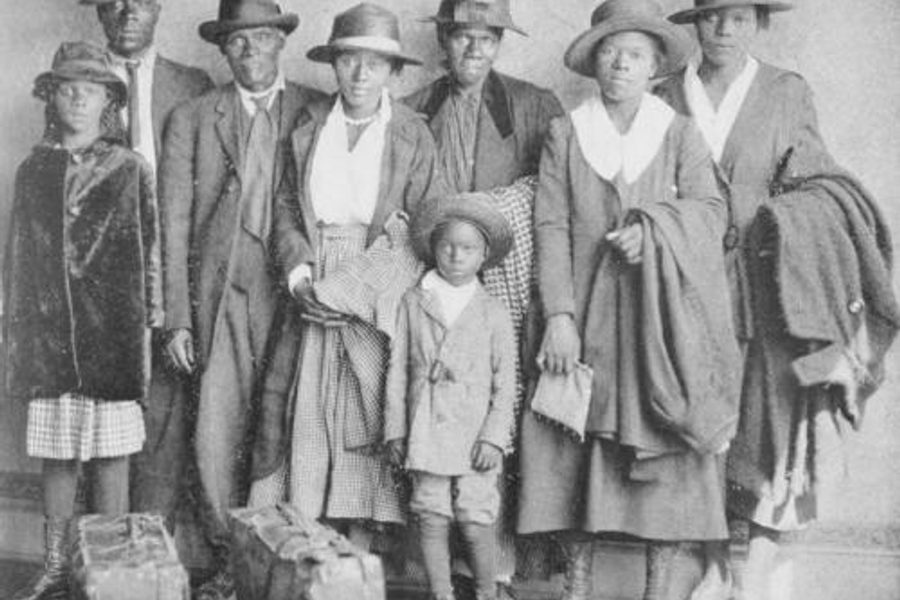Closing the Racial Wealth Gap Isn’t Just the Right Thing to Do—It’s Good Economics
The median net worth of white families is 9.5 times more than Hispanic families and 12 times more than black families. And the gap has scarcely narrowed in half a century.
Solana Rice and Lillian Singh

In an attempt to re-energize the Democratic base, President Barack Obama spoke out recently about some economic good news. Millions of jobs have been added since the recession, the home price index rose by 17 percent and the Standard & Poor 500 hit all-time record highs.
But in spite of all that cheerfulness, one thing is mostly unchanged since he entered office: workers’ income. As a result, nearly half of Americans, or 44.3 percent, do not have enough savings to withstand a three-month disruption in income that will allow them to live above the poverty line. The rate is much higher in households of color at 61 percent, according to the Corporation for Enterprise Development.
The reality is too many Americans, especially people of color, are living on the brink. This is stressful and detrimental not just for families, but also for local and national economies. Wealth inequality slows our nation’s economic growth. A recent U.S. Census report reveals that in 2011, real median household income was 8 percent lower than it was in 2007.
If a family is not already living paycheck to paycheck, income from wages alone can rarely hold over a family for long in a crisis. As a recent study from the Organization for Cooperation and Economic Development illustrates, this is especially true when those wages are low and tied to jobs that are temporary, without benefits, and vulnerable to being eliminated.
What really keeps families afloat is wealth — what you own minus what you owe. That includes a reserve of savings, access to capital investments like retirement accounts, and appreciating financial assets like a home or business.
The growing national narrative on inequality is heartening, but we must squarely confront that wealth inequality is outpacing income inequality.
A lack of liquid savings is an issue for all Americans, as 89 percent of those that are liquid asset poor are working households, half have some college education and a quarter are middle class.
Wealth accumulation has historically been racialized. The last recession was no different.
In 1995, the gap had narrowed until median white income had only a five-to-one lead over black income. But during the next 14 years, the wealth gap began to explode, until it skyrocketed up to 19-to-1 after the great recession in 2009.
Demos reports that in 2013, the median net worth of white families was $134,000. This is 9.5 times more than median net worth of Hispanic families and 12 times that of black families.
During this same time, household income growth for African Americans outpaced whites’. However, Pew Research Center reports that income gains haven’t led to the narrowing of the racial wealth gap.
In a recent study, New York University’s David Low shows that high-earning married black households have, on average, less wealth than low-earning married white households.
It is impossible to discuss this economic inequality in color-blind terms. By almost any economic indicator — wealth, income, homeownership or business ownership — the disparities between African-American families and white families remain great.
And the gap has scarcely narrowed in half a century.
Nobel Prize-winning economist Joseph E. Stiglitz wrote that when large swaths of our population lose trillions in long-term wealth, our entire economy is worse off for it. The economy grows slower and more unevenly.
We must ask then if we can afford to have so many families at the front lines of economic crisis. There are moral, social and economic consequences of wealth inequality.
A report released by Standard & Poor recently reveals that state governments are also struggling as a result of the wealth gap. Because of lower levels of sales tax revenues, states cannot support their budgets. According to David Brunori, a public policy professor at George Washington University, states are facing a major dilemma: to raise taxes or cut spending to balance their budgets, a delicate and political decision.
This is why community organizations, national organizations, private and public enterprises, grassroots groups and Congress need to address policy, programmatic and market-driven barriers in our economy that stifle the ability to build wealth for all American families, and African American families in particular.
As cities and states across the country build momentum in increasing minimum wage, advocates must band together to also improve job quality, expand access to financial products and services and eventually level the playing field through reforming our tax code. When the wealth gap narrows, everyone benefits.
Let’s not forget that the fight to end economic inequality is both about increasing hard-earned income and having the reserves for all Americans to live the most comfortable lives possible.




